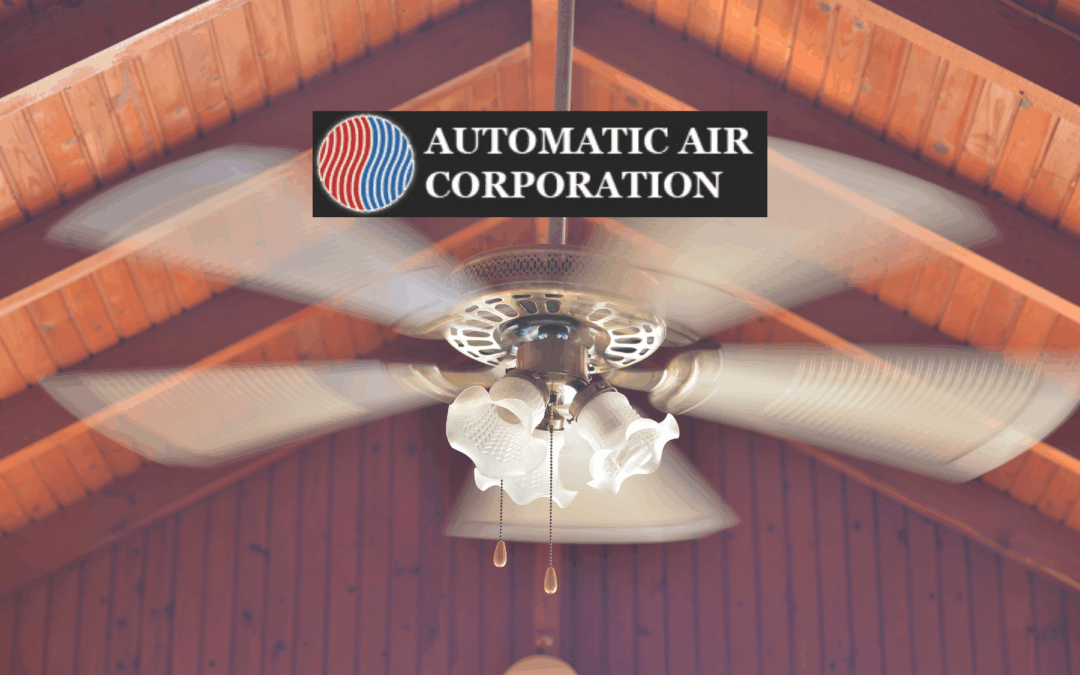Ceiling fans are more than just decorative additions to your home—they can play a significant role in keeping your living space comfortable and energy-efficient in every season. But did you know that changing the direction of your ceiling fan can enhance its effectiveness? That’s right! The direction your ceiling fan spins affects airflow, and adjusting it for summer and winter can lead to improved comfort and even lower utility bills.
This guide will walk you through everything you need to know about ceiling fan directions, including the correct settings for summer and winter, how to change the direction, and why doing so is worth your time.
The Correct Ceiling Fan Direction for Each Season
Summer Mode: Counterclockwise Rotation
During the hot summer months, your ceiling fan should spin counterclockwise. This creates a cooling breeze by pushing air downward, providing you with what’s known as the “wind-chill effect.” While the fan doesn’t actually lower the temperature in the room, it makes you feel cooler by circulating the air directly onto your skin. This means you can rely less on your air conditioner and set your thermostat a little higher, leading to energy savings.
Tip: To test if your fan is spinning in the right direction during summer, stand directly beneath it. You should feel a strong breeze coming down toward you. If not, it’s time to adjust the fan’s settings.
Winter Mode: Clockwise Rotation
When the temperature drops and you’re cranking up the heat, your ceiling fan should spin clockwise at a low speed. This might seem counterintuitive, but it works by pulling cool air upward toward the ceiling and pushing warm air—naturally rising due to heat—down along the walls. This gentle circulation redistributes the heat evenly throughout the room, keeping you warmer without requiring your heating system to work overtime.
Tip: You’ll know your ceiling fan is set correctly for winter if you don’t feel a significant breeze while standing beneath it. Instead, the warm air will be circulating more subtly around the room.
How to Change Your Ceiling Fan Direction
Switching your fan’s direction is a breeze (pun intended) once you know what to look for. Here’s how to do it step by step:
- Turn Off the Fan
Safety first! Ensure your ceiling fan is completely turned off before making any adjustments. This prevents accidents and makes it easier to locate the direction switch.
- Locate the Direction Switch
Most ceiling fans have a small switch on the motor housing right beneath the blades. This is typically labeled to indicate the directions (e.g., “forward” for counterclockwise and “reverse” for clockwise). If your fan is mounted high, you may need a ladder or a stool.
- Adjust the Switch
Flip the switch to the desired direction. Remember, set it to counterclockwise for summer and clockwise for winter. If you’re unsure which is which, give the fan a brief spin after flipping the switch and observe its rotation.
- Turn the Fan Back On
Once the switch is set, turn the fan back on to confirm it’s rotating in the correct direction.
Tip: Some modern ceiling fans come with remote controls or smart home integration, allowing you to change the direction with just a push of a button. Check your fan’s user manual to see if this feature is available.
Why Changing Ceiling Fan Direction Matters
You might be wondering, “Why go through all this trouble? Does it really make a difference?” The answer is a resounding yes! Here are some of the key benefits:
1. Energy Efficiency
Adjusting your ceiling fan direction allows you to use heating and cooling systems more efficiently. During summer, the fan’s counterclockwise rotation helps you feel cooler, allowing you to reduce air conditioning usage by up to 4 degrees without sacrificing comfort. Similarly, in winter, the clockwise rotation allows warm air to circulate better, letting you turn down the thermostat without feeling a chill.
2. Cost Savings
By making your home heating and cooling systems more efficient, ceiling fan adjustments can significantly cut down on energy bills. A well-placed and properly set ceiling fan can reduce energy costs by up to 30% in the summer and as much as 15% in the winter.
3. Improved Comfort
When your ceiling fan is set correctly for the season, it creates a more consistent temperature throughout your home. No more sweating in one area of the room while freezing in another—the fan helps eliminate hot spots and drafts.
4. Eco-Friendliness
By reducing your reliance on energy-intensive heating and cooling systems, you’re also cutting down on your carbon footprint. It’s a small change, but it contributes to a more sustainable lifestyle.
Practical Tips for Year-Round Fan Use
- Dust Your Fan Blades Regularly
A dusty fan not only spreads allergens but can also affect airflow. Clean the blades every few months to keep your fan running efficiently.
- Use Fans Strategically in Large Rooms
If you have a larger room or an open-concept space, placing multiple fans in strategic locations can better circulate air throughout the area.
- Pair Fans with Thermostats
Combine your ceiling fan adjustments with a programmable or smart thermostat to maximize savings and maintain consistent comfort.
- Remember to Stop Fans in Empty Rooms
Ceiling fans cool or warm people, not spaces. Turn off fans when you leave a room to save energy.
Final Thoughts
Changing the direction of your ceiling fan might seem like a minor detail, but it can have a big impact on your comfort, energy efficiency, and utility bills. With just a quick flip of a switch, you can optimize your fan for the season and make your home a more pleasant place to be—all while saving money and reducing your environmental impact.
Now that you know the how and why, take a few minutes today to check your ceiling fan’s direction. It’s a simple adjustment that offers big rewards!



